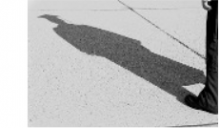 PhD defense of Katayoun KAZEMZADEH FERIZHENDI on 11/03/2023
PhD defense of Katayoun KAZEMZADEH FERIZHENDI on 11/03/2023


PhD defense of Katayoun KAZEMZADEH FERIZHENDI from TIMC's TrEE team, on Friday, November 3, 2023, at 2pm:
" Study of ubiquinone biosynthetic pathways in proteobacteria. "
-
Place: Salle des thèses du bâtiment Boucherle, 5 Chemin Duhamel,
Facultés de Médecine et Pharmacie, 38700 La Tronche
Jury
- Ludovic PELOSI, Professeur des Universités, Université Grenoble Alpes, Supervisor
- Fabien PIERREL, Directeur de recherche, CNRS délégation Alpes, Co-supervisor
- Laurent AUSSEL, Professeur des Universités, Aix-Marseille Université, Reporter
- Simonetta GRIBALDO, Professeure, Institut Pasteur, Rapporteure
- Christelle BRETON, Professeure des Universités, Université Grenoble Alpes, Examiner
- Anne WALBURGER, Maîtresse de conférences, Aix-Marseille Université, Examiner
Supervision
- Ludovic PELOSI, Professeur des Universités, Université Grenoble Alpes, Supervisor
- Fabien PIERREL, Directeur de recherche, CNRS délégation Alpes, Co-supervisor
 Keywords
Keywords
Ubiquinone, Aerobiosis / Anaerobiosis, Respiratory metabolism, Hydroxylases, Proteobacteria, Pathogenicity
 Abstract
Abstract
Ubiquinone (UQ) is a redox lipid involved in electrons and protons transfer in the respiratory chains of eukaryotes and proteobacteria. UQ plays a central role in the bioenergetics of these organisms. The UQ biosynthesis pathway has been extensively studied in Escherichia coli. This facultative anaerobic bacterium synthesizes UQ aerobically via an O2-dependent pathway and anaerobically via an O2-independent pathway. These two multi-step pathways involve various enzymes and accessory proteins. Some are common to both pathways (UbiA to UbiE, UbiG and UbiX), while others are involved only in the O2-dependent pathway (UbiI, UbiH, UbiF, UbiJ and UbiK) or in the O2-independent pathway (UbiT to UbiV). Each of the two pathways involves three hydroxylation reactions on contiguous carbon atoms of the aromatic ring of the UQ intermediates. During this thesis work, we were interested in the hydroxylation reactions of the two pathways in proteobacteria, from a biochemical, evolutionary and physiological point of view. Moreover, we also studied the role of UQ in the pathogenicity of Francisella novicida bacteria. Under aerobic conditions, all three hydroxylation reactions are catalyzed by flavin (FMOs) or iron (Coq7) monooxygenases, which use oxygen (O2) as a source of hydroxyl groups. Various combinations of hydroxylases have been shown to be used by bacteria. For example, E. coli uses three FMOs, (UbiI, H and F) while Rhodospirillum rubrum employs UbiL (FMO) and Coq7, and Neisseria meningitidis has just one enzyme, UbiM (FMO). These results suggested a varied regioselectivity (ability to hydroxylate a specific carbon of the aromatic ring) for O2-dependent hydroxylases, particularly for FMOs. We therefore explored the evolution of the regioselectivity of FMOs involved in UQ biosynthesis (Ubi-FMOs) by analyzing the genomes of 2352 species of α-, β- and γ-proteobacteria. Our phylogenetic and biochemical analyses highlighted the existence of a new FMO (UbiN) and revealed that Ubi-FMOs diversified via three duplication events associated with one case of sub-functionalization and two cases of neo-functionalization linked to a loss of Coq7. The team also demonstrated the involvement of the UbiT, U, V proteins in the O2-independent pathway of UQ biosynthesis. However, the identity of the hydroxylases and the hydroxyl group donor for O2-independent hydroxylation reactions remained to be elucidated. Through in vivo experiments, we have shown that the UbiU-V heterodimer is capable of hydroxylating all three carbon atoms of UQ intermediates, and that UbiU-V activity depends on a metabolite of the shikimate pathway, presumably prephenate. Labelling experiments demonstrated that this metabolite is the source of the hydroxyl group used in the O2-independent hydroxylation reactions of UQ biosynthesis. These results reveal the first organic molecule to be used as a hydroxyl donor in biological reactions and suggest that proteins belonging to the same family as UbiU-V could function in a similar way. In addition, genetic and physiological analyses showed that expression of UbiU-V is regulated by FNR, an O2-sensitive transcriptional regulator, and that UbiU-V provide a slight advantage to E. coli for colonizing the mouse intestine, one of its ecological niches. Overall, our results reveal that UbiTUV participate in the strategy used by E. coli to adapt to respiratory conditions in versatile environments such as the gut. Finally, we characterized the UQ biosynthetic pathway in the bacterium F. novicida. Using Galleria mellonella as a model, we were able to show for the first time that UQ contributes to the pathogenicity of this bacterium.
